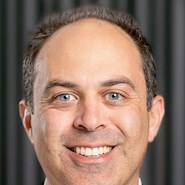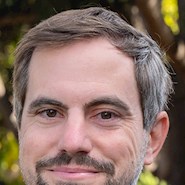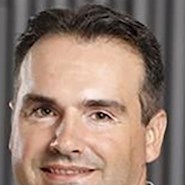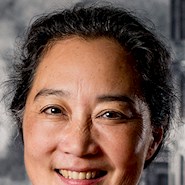By Ibrahim Almufti, P.E., S.E., CWMS, Adam Zsarnóczay, Ph.D., Aff.M.ASCE, Stevan Gavrilovic, Ph.D., and Grace Kang, P.E., S.E.
As our cities grow larger, a single earthquake can disrupt more and more communities. And engineers are expected to not only mitigate these disruptions through stronger structures but also develop designs that foster resilience and ensure prompt recoveries.
Currently, typical code-conforming buildings are designed with a focus on life safety through collapse prevention in large earthquakes. This means that a building will remain in such a condition that it serves to preserve the lives of its occupants during the design event. The standard design process does not include analyses on the extent of damage and its consequences on post-disaster building functionality. After even a moderate earthquake, however, even modern buildings may be so damaged that they are unusable for several weeks or longer while repairs occur.
A functioning city requires buildings that go beyond life safety and can be quickly reoccupied after an earthquake because they have experienced only minimal damage. Therefore, a recent, more holistic view of earthquake engineering considers resilience in the design process by minimizing downtime, meaning the time it takes for a building to return to its intended functionality after an earthquake. Functional recovery is thus one component of resilient design.
Arup, a global sustainable development firm, and the Natural Hazards Engineering Research Infrastructure’s SimCenter, a National Science Foundation-funded computational modeling and simulation center, recently aligned efforts with the open-source release of their Resilience-Based Design Initiative’s Seismic Downtime Model and its integration into the SimCenter’s open-source Performance Based Engineering application.
Open-source simulation tools and publicly available resources foster building-performance consensus in the broad engineering community through transparency. They also accelerate the improvement of existing design methods through community-based development. This helps us move toward more understandable and tangible measures of building performance and natural hazard risk that design teams can use for projects.
Increasing resilience
Arup began developing the REDi resilience guidelines more than a decade ago. It centered on addressing the gap between building codes, which focus on collapse prevention, and what the public would expect a building performance to be by providing designers with enhanced design and planning criteria to achieve much higher levels of resilience.
Arup believes that resilience-based seismic design has four fundamental pillars:
- Enhanced building design, which involves making sure that certain features can be incorporated into a building’s design to minimize damage from earthquakes.
- Operational resilience, or the ability of an organization to respond quickly, have backup systems in place, and have a decision-making process that allows users to get back into the building and use it for its intended functionality again.
- Site resilience, which includes factors outside of the building envelope that might hinder access to or the ability of a building to function, such as the availability of utilities.
- Risk assessment, which involves evaluating how design and planning measures support post-earthquake functional recovery targets.
The REDi Seismic Downtime Model was developed to enable the measurement of post-earthquake functionality and evaluate design and planning enhancements in achieving more resilient buildings.
In 2012, the Federal Emergency Management Agency leveraged more than a decade of research on performance-based engineering and published FEMA P-58, “Seismic Performance Assessment of Buildings,” which provided a practical calculation methodology to assess detailed earthquake damages in buildings. The consequences of damages were measured in terms of the cost and time it takes to repair each building component. However, the time it takes to repair an entire building is not simply the sum of component repair times. The FEMA methodology computes aggregate repair time of all damaged components assuming two bounding scenarios, with the most optimistic assuming that all repairs happen simultaneously and the most pessimistic assuming that all repairs happen sequentially. The resulting lower and upper bound repair times were often an order of magnitude apart.
Arup developed REDi to extend the FEMA P-58 methodology and provide a realistic estimate of the time it takes to reach key milestones in building functionality, including reoccupancy, restoration of functionality, and restoration to the building’s original pre-earthquake condition (or better).
REDi includes impeding factors that delay the initiation of building repairs, such as the time it takes to mobilize contractors, secure financing, design repair actions, and obtain permitting. The REDi Seismic Downtime Model incorporates logical repair sequences likely to be undertaken by contractors. These improvements yield realistic downtimes that can inform design decisions and provide incentives for resilient designs.
Open-source access
Arup and the SimCenter have been collaborating for several years, and during the initial stages of this partnership, discussions arose regarding the significant role REDi could play in research on the post-earthquake recovery of buildings and communities. Recognizing the importance of a robust methodology, there was an emphasis on the broader benefits for the research community and practitioners to have access to the “official” REDi Seismic Downtime Model.
Through these discussions, it became clear that by reducing barriers to access, researchers and engineers could work together on iterative improvements to the model. A transparent and shared methodology allows everyone to leverage these advanced models and ensures that a building’s performance is measured using well-defined and reproducible processes.
The engineering research community can review and modify the REDi open-source code to experiment with improvements and propose changes to the official version. The discussions that emerge around proposed changes build a community of experts on the topic of seismic downtime simulation and resilient design. These experts include practitioners who can adopt the latest research advances almost immediately whenever a new version of REDi is released.
To enhance accessibility and integration into various research and practical applications, the REDi code is accessible as a stand-alone Python package known as PyREDi. PyREDi facilitates installation through the widely used pip package manager, enabling researchers and practitioners to incorporate REDi functionality into their custom Python scripts and workflows.
Notably, with over 1,300 downloads at the time of this article, PyREDi has garnered significant interest within the community. SimCenter’s PBE application further broadens the reach of this method by appealing to those who are not comfortable with coding. PBE is a desktop application that lets engineers run complex performance assessment calculations through a convenient user interface and include these calculations in their typical design workflows. REDi is the first recovery module to be implemented in the PBE application.
A look to the future
The SimCenter aims to bridge the gap between practice and research to accelerate innovation in natural hazards engineering. The open-source release of REDi supports the development and dissemination of that method and also enables benchmarking with other methods for downtime estimation that have been proposed more recently in the engineering community. SimCenter wants to provide a common platform from which experts can access all relevant methodologies to use, evaluate, and improve them.
Arup plans to create a multihazard suite of REDi guidelines. REDi for Extreme Windstorms was released in 2022, and a version for floods was recently released. These releases mark a significant step forward in enhancing the reach of REDi, ensuring that it remains at the forefront of resilience-based design and recovery modeling. Arup welcomes feedback and proposed changes to the REDi methodology through email ([email protected]) or directly as contributions to its GitHub repository.
Ibrahim Almufti, P.E., S.E., CWMS, is a principal based in Arup’s San Francisco office; Adam Zsarnóczay, Ph.D., Aff.M.ASCE, is the associate director for research outreach at the Natural Hazards Engineering Research Infrastructure’s SimCenter as well as a research engineer at the John A. Blume Earthquake Engineering Center at Stanford University; Stevan Gavrilovic, Ph.D., is a digital risk and resilience engineer at Arup based in its San Francisco office as well as a software developer at the NHERI SimCenter; and Grace Kang, P.E., S.E., is the communications manager at the NHERI SimCenter.
This article is published by Civil Engineering Online.






